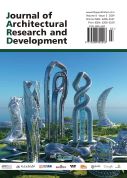Abstract
In order to investigate the degradation of bonding properties between corroded steel bars and concrete, this study employs the half-beam method to conduct bond-slip tests between corroded steel bars and concrete after impressed-current accelerated corrosion of the steel bars in concrete. The effects of steel corrosion rate, steel bar diameter, steel bar strength grade, and concrete strength grade on the bonding properties between concrete and corroded steel bars were analyzed. The influence of different corrosion rates on specimens’ bonding strength and bond-slip curves was determined, and a constitutive relationship for bond-slip between corroded steel bars and concrete was proposed. The results indicate that the ultimate bonding strength of corroded reinforced concrete specimens decreases with increasing corrosion rate. Additionally, an increase in corrosive crack width leads to a linear decrease in bonding strength. Evaluating the decline in adhesive properties through rust expansion crack width in engineering applications is feasible. Furthermore, a bond-slip constitutive relationship between corroded steel bars and concrete was established using relative bond stress and relative slip values, which aligned well with the experimental findings.
References
Liang X, He F, Li X, et al., 2022, Research Progress on Strength and Bond Properties of Corroded Steel Bars. Building Structure, 52(S1): 1571–1575.
Zhuang B, Xiao C, Liu Q, et al., 2022, Experimental Study on Bond-Slip Mechanical Properties of Concrete with Different Admixtures and Corroded Reinforcement. Bulletin of the Chinese Ceramic Society, 41(8): 2767–2773.
Wang C, Wu Y, Chao F, et al., 2022, Experimental Study on Bond Behavior Under Coupling Effect of Freezing-Thawing Between Corroded Steel Bar and Recycled Concrete. Journal of Building Structure, 43(Suppl.1): 382–393.
Alsulaimani GJ, Kaleemullah M, Basunbul IA, 1990, Influence of Corrosion and Cracking on Bond Behaviour and Strength of Reinforced Concrete Members. ACI Structural Journal, 87(2): 220–231.
Rodriguez J, Ortega LM, Casal J, et al., 1994, Corrosion of Reinforcement and Service Life of Concrete Structures: Corrosion and Bond Deterioration. International Conference on Concrete Across Borders, 315–326.
Almusallam AA, Al-gahtani AS, Aziz AR, et al., 1996, Effect of Reinforcement Corrosion on Bond Strength. Construction and Building Materials, 10(2): 123–129.
Stanish K, Hooton RD, Pantazopoulou SJ, 1999, Corrosion Effects on Bond Strength in Reinforced Concrete. ACI Structural Journal, 96(6): 915–921.
Mangat P, Elgarf M., 1999, Bond Characteristics of Corroding Reinforcement in Concrete Beams. Materials and Structures, 32(2): 89–97.
Yuan Y, Yu S, Jia F, 1999, Deterioration of Bond Behavior of Corroded Reinforced Concrete. Industrial Construction, 29(11): 47–50.
Eligehausen R, Popov EP, Bertero VV, 1983, Local Bond Stress-Slip Relationships of Deformed Bars Under Generalized Excitations, dissertation, University of California, 69–80.
Ciampi V, Eligehausen R, Bertero V V, et al., 1981, Analytical Model for Deformed Bar Bond Under Generalized Excitations. Trams IABSE Colloquium on Advanced Mechanics of Reinforced, 53–67.
Xu Y, Wang H, Shi Z, 1990, Experimental Study on Bond-Anchorage Mechanism of Steel Bar. Proceedings of the Second Symposium on Basic Theory and Application of Concrete Structures (volume I), 211–218.
Somayaji S, Shan SP, 1981, Bond Stress Versus Slip Relationship and Cracking Response of Tension Members. ACI, Journal Proceedings. 78(3): 217–225.
Zhao Y, Jin W, 2002, Test Study on Bond Stress-Slip Relationship of Concrete and Steel Bar. Journal of Building Structure, 23(1): 32–37.
Wu YF, Zhao XM., 2014, Unified Bond Stress-Slip Model for Reinforced Concrete. Journal of Structural Engineering, 139(11): 1951–1962.
Nilson AH, 1972, Internal Measurement of Bond Slip. ACI Journal Proceedings, 69(7): 439–441.
Yuan Y, Jia F, Cai Y, 2001, The Structural Behavior Deterioration Model for Corroded Reinforced Concrete. China Civil Engineering Journal, 34(3): 47–52.
Zhang W, Zhuang Y, 2001, Study on the Constitutive Relationship of Bond Slip Between Corroded Reinforcement and Concrete After Cracking. China Civil Engineering Journal, 34(5): 40–44.
Kivell A, Palermo A, Scott A, 2015, Complete Model of Corrosion-Degraded Cyclic Bond Performance in Reinforced Concrete. Journal of Structural Engineering, 141(9): 04014222.
Fang L, 2021, The Research on Flexural Behavior of Corroded HRB500 Reinforced Concrete Members, thesis, College of Civil Engineering, dissertation, Hunan University, 25–50.
Al-Sulaimani GJ, Kaleemullah M, Basunbul IA, et al., 1990, Influence of Corrosion and Cracking on Bond Behavior and Strength of Reinforced Concrete Members. ACI Structural Journal, 87(2): 220–231.
Law DW, Tang D, Molyneaux TKC, et al., 2011, Impact of Crack Width on Bond: Confined and Unconfined Rebar. Materials and Structures, 44(7): 1287–1296.
Tang D, Molyneaux TK, Law DW, et al., 2011, Influence of Surface Crack Width on Bond Strength of Reinforced Concrete. ACI Materials Journal, 108(1): 29–37.
Tahershamsi M, Fernandez I, Lundgren K, et al., 2016, Investigation Correlations Between Crack Width, Corrosion Level and Anchorage Capacity. Structure and Infrastructure Engineering, 13(10): 1294–1307.
Lundgren K, Tahershamsi M, Zandi K, et al., 2015, Tests on Anchorage of Naturally Corroded Reinforcement in Concrete. Materials and Structures, 48(7): 2009–2022.
Lin H, 2017, Experimental Study on the Bond Behavior of Corroded Reinforced Concrete under Monotonic or Repeated Loading, thesis, College of Civil Engineering and Architecture, Zhejiang University, 1–29.
